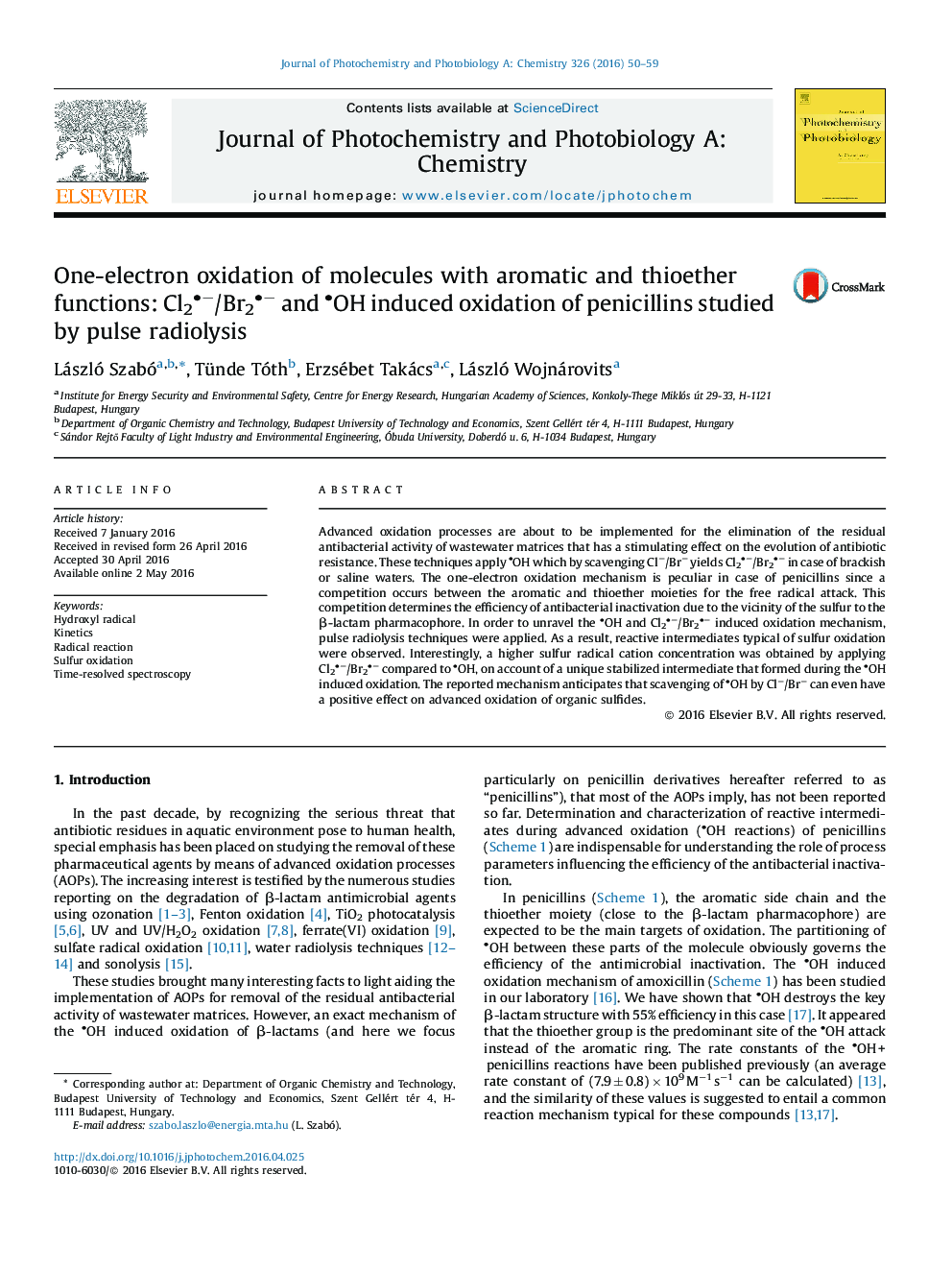| Article ID | Journal | Published Year | Pages | File Type |
|---|---|---|---|---|
| 25967 | Journal of Photochemistry and Photobiology A: Chemistry | 2016 | 10 Pages |
•OH/Cl2−/Br2− targets predominantly the sulfur atom.•Intermediates of the one-electron oxidation of the thioether function are observed.•Higher >S(+) concentration is obtained applying Cl2−/Br2− compared to OH.•The higher concentration is due to a stabilized OH-adduct at the sulfur.
Advanced oxidation processes are about to be implemented for the elimination of the residual antibacterial activity of wastewater matrices that has a stimulating effect on the evolution of antibiotic resistance. These techniques apply OH which by scavenging Cl−/Br− yields Cl2−/Br2− in case of brackish or saline waters. The one-electron oxidation mechanism is peculiar in case of penicillins since a competition occurs between the aromatic and thioether moieties for the free radical attack. This competition determines the efficiency of antibacterial inactivation due to the vicinity of the sulfur to the β-lactam pharmacophore. In order to unravel the OH and Cl2−/Br2− induced oxidation mechanism, pulse radiolysis techniques were applied. As a result, reactive intermediates typical of sulfur oxidation were observed. Interestingly, a higher sulfur radical cation concentration was obtained by applying Cl2−/Br2− compared to OH, on account of a unique stabilized intermediate that formed during the OH induced oxidation. The reported mechanism anticipates that scavenging of OH by Cl−/Br− can even have a positive effect on advanced oxidation of organic sulfides.
Graphical abstractFigure optionsDownload full-size imageDownload as PowerPoint slide
